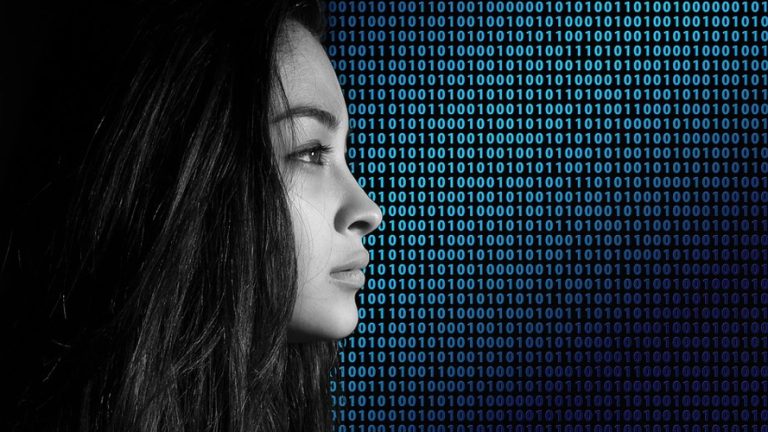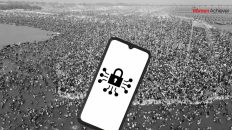The cyber-crime is an offence which uses a computer (or any such device) as its primary mode of commission.
For a layman, cyber-crime is any offence which uses a computer (or any such device) as its primary mode of commission. The IT Act does not specifically define the term ‘cyber-crime’ per se, because every crime relating to cyber security is defined separately. On a detailed reading of chapter XI of the Act, it can be deduced that cyber-crimes mean and include tampering with computer source code, hacking, cyber pornography, online fraud, cyber defamation, and harassment, intellectual property theft, cyber terrorism, violation of privacy, sending offensive texts, identity theft, cheating by personation, publication or transmission of sexually explicit materials and other such offences. Most common crimes against women in cyber-crime in India are as follows:
Cyber Harassment:
It is interference into someone’s personal life (without their consent). With a mala fide intent to blackmail, threaten, coerce, bully, phish, cheat, annoy or offend via the internet.
Cyber Stocking:
It is the most common cyber-crime of modern times. According to the Oxford dictionary, it means pursuing someone stealthily. Following a person’s movement across the internet and constantly spamming the victim with texts, posts, images etc. constitutes cyber stocking. It also includes the threat to humiliate or embarrass the victim by false accusation or victimization.
Cyber Pornography:
Currently more than 50% of web pages contain pornographic contents. It can be dangerous for the modesty and integrity of women, because such contents especially images can be easily edited to resemble the identity of a particular woman.
Cyber Defamation:
It is simply the act of publishing any defamatory or derogatory content about someone with mala fide intentions by using computer/internet. It is a very common offence against women in cyber-crime. Mostly it is committed by hacking into someone’s social media profile like Facebook, Twitter or any mailing platform.
Morphing:
It is basically editing the face or any other body part of one person with another person. It is noticed that images of women are downloaded from internet and then is morphed with another person and are re-posted on some other objectionable webpage.
Email Spoofing:
When an e-mail misrepresents, hides or alter its origin or its sender’s it is called a spoof e-mail. It is used to create a false image of the sender of the e-mail in the mind of the victim. Cybercriminals use such mails to get confidential information out from a woman by pretending to be a public servant, police, doctor etc. and then use such information to threaten, blackmail or annoy the victim.
Challenges Involved in Protecting Women From Cyber-Crimes
- It is noticed that generally the offenders cannot be tracked. The primary reason is lack of proper coordination between legal machineries of government and businesses (mostly of foreign origin). Many online portals take the garb of free speech and expression to circumvent the specific provisions of the act. As witnessed in the recent tussle between the government of India and Twitter.
- Another challenge involved is that Section 79 of the IT Act, 2000 provides for exception from liability to the internet service provider. According to it the service provider will not be liable for any offence committed by a third party, provided that the service provider was unaware of such an offence, and he has not willingly or knowingly abetted such offence. The terms such as ‘due diligence’ and ‘knowledge’ used in the Act are not defined anywhere, and thus it becomes difficult to prove the presence of any awareness of the cyber offence on the side of the service provider.
- The IT Act, in its current form does not explains the extra-territorial jurisdiction of Indian courts to try offenders in foreign nations. It had been noticed that cyber-crimes are mostly launched from foreign soils and thus it is declared as an international crime. Therefore, it’s difficult to punish an offender without clear jurisdiction of the courts.
- One of the basic reasons for the ever-increasing instances against women in cyber-crime is because of mismatch between the advancement rate of technology and law. There is a clear paucity of legal safeguards against cyber-crimes, as such crimes are yet not defined by laws.
- Cyber stocking which is certainly the biggest threat to women on internet was only identified as an offence as recent as in 2013 after the recommendation of the J.S Verma Committee. Stocking is now punishable under section 354(D) of IPC, however, this section only recognizes stalking by a man. The legislature needs to understand that stoking is a crime per se irrespective of the gender of the offender.
- It has been reported that harassment against women in cyber-crime in India is seen as lesser harassment. The Indian government and media have always given more weightage to actions against physical harassment than against cyber harassment. Also, cyber-crimes under IT Act are mostly associated with e-commerce like fraud, deception, and financial crimes as provided by the preamble of the Act. And many women in India are not aware that cyber-crimes against women are dealt in special laws.
In current environment of information-centric warfare, a country is as secure as its citizens in the cyber world. Hacking and cyber-crimes are the latest and most powerful weapons of subjugation. Cyberspace is the new battleground, and it is being manipulated by hackers, cheaters, perverts and anti-social people to fulfil their lustful desires.






Add comment